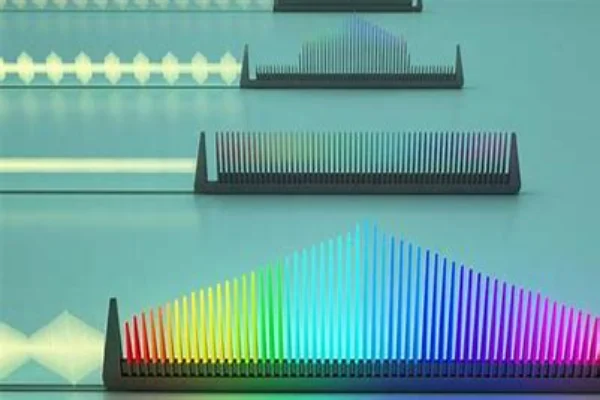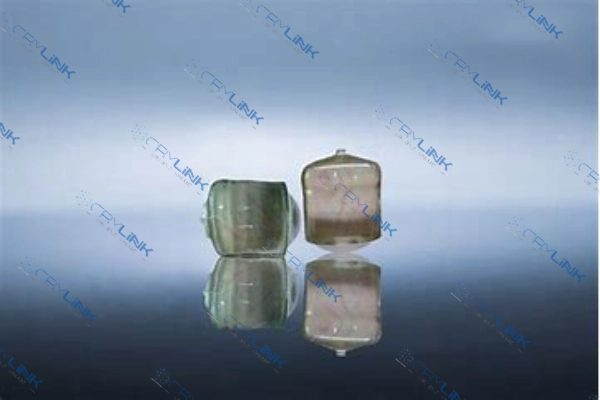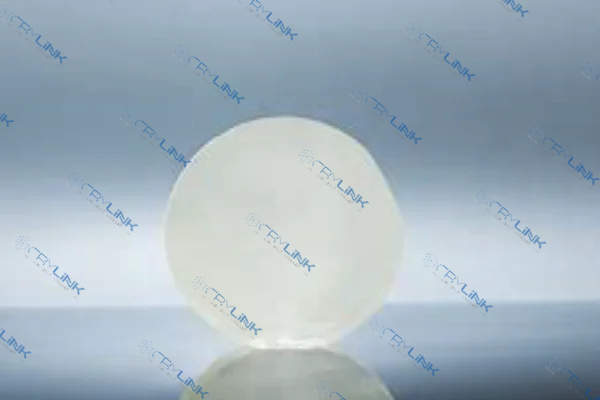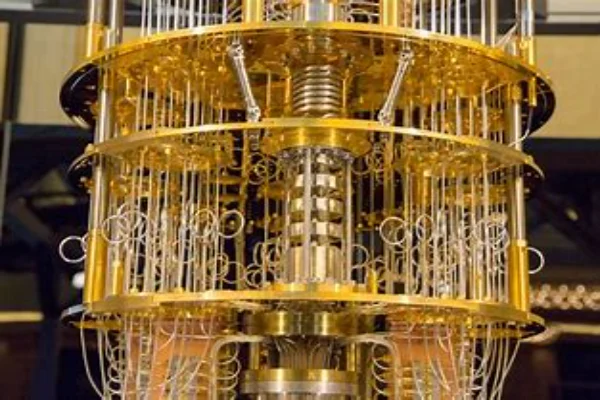Introduction to Frequency Comb Generation
Frequency combs have transformed the landscape of frequency metrology and spectroscopy. These optical tools, consisting of a spectrum of discrete, equally spaced frequencies, act as the metaphorical “rulers of light”, enabling unprecedented precision in frequency measurements. In this realm, Lithium Niobate (LiNbO3) and Magnesium-doped Lithium Niobate (MgO:LN) crystals have emerged as pivotal elements. The unique capabilities and potential applications of these crystals in frequency comb generation are the focus of this comprehensive examination.
Origins of Frequency Comb Technology
The concept of a frequency comb originated from the work of Theodor W. Hänsch and John L. Hall, for which they were awarded the Nobel Prize in Physics in 2005. Their pioneering efforts paved the way for a profound shift in our approach to frequency measurement, birthing a tool that holds significance in areas from timekeeping to telecommunications, from fundamental physics to environmental monitoring.

The Science Behind Frequency Combs
Understanding frequency combs requires an appreciation of their quantum-mechanical origins. Light is made up of individual packets of energy known as photons. When a coherent light source like a laser operates in a mode-locking condition, it generates a train of ultra-short light pulses. The Fourier transform of this pulse train leads to the formation of a frequency comb—a series of equally spaced frequency lines, or ‘teeth’.
Unraveling the Role of LiNbO3 in Frequency Comb Generation
Unveiling the multifaceted role of LiNbO3 in frequency comb generation opens up a panorama of intriguing scientific processes and potential applications. As a birefringent crystal recognized for its distinctive electro-optic properties, LiNbO3 steps into the limelight due to its capacity to facilitate the nonlinear interaction of light. This complex interaction, which serves as the backbone of frequency comb generation, essentially gives LiNbO3 its stature in this field.
Delving deeper into the nonlinear optics, one can appreciate how LiNbO3 ushers in effective frequency conversion. Its ability to perform second harmonic generation (SHG) is particularly noteworthy. SHG is a nonlinear optical process in which two photons with the same frequency interact within a nonlinear material, combining to generate a new photon with twice the original frequency. This intricate process generates a coherent light source with a frequency precisely twice that of the input, marking a significant milestone in the generation of frequency combs. In this way, LiNbO3 crystal, due to its inherent ability to facilitate SHG, carves a niche for itself as a critical component in the creation of frequency combs.
Moving beyond the process of frequency conversion, the temporal properties of frequency combs generated from LiNbO3 merit equal attention. A notable aspect of LiNbO3 is that its physical characteristics allow for the efficient generation of ultra-short pulses, pivotal in chiseling the fine “teeth” of a frequency comb. This metaphorical dental work is not merely for aesthetics; these short, regular pulses set the stage for precision in frequency measurements and timekeeping. The regularity and shortness of these pulses translate to precision and accuracy, essential prerequisites in the realm of high-precision metrology and fundamental physics. Hence, the ability of LiNbO3 to generate ultra-short pulses efficiently propels it to a position of significance in these demanding and rigorous fields.
By synthesizing these various aspects, it becomes clear that LiNbO3 is not just an actor in the scientific drama of frequency comb generation, but a protagonist playing a critical role. From its ability to enable nonlinear light interaction, to its role in frequency conversion via SHG, and finally to the generation of ultra-short pulses required for high precision applications, LiNbO3 rightfully earns its spotlight. This exploration into the role of LiNbO3, therefore, reveals a crystal that is not only unique in its properties but also indispensable in the realm of frequency comb generation.

Exploiting MgO:LN in Frequency Comb Generation
The role of Magnesium-doped Lithium Niobate (MgO:LN) in the generation of frequency combs is marked by its distinct characteristics and versatile applications. As another essential nonlinear optical crystal, MgO:LN draws attention for its inherent properties – a high damage threshold, remarkable thermal stability, and striking photorefractive properties. These attributes not only shape its identity but also accentuate its competency as a source for frequency combs.
A critical advantage of MgO:LN crystals lies in their high damage threshold, thanks to the incorporation of magnesium. This ability to endure high light intensities without sustaining significant structural damage enables the crystal to navigate environments that demand the use of intense light. Consequently, MgO:LN becomes an ideal candidate for applications such as high-power frequency comb generation, solid-state lasers, and advanced optical communication systems. Its capability to weather high-intensity light imparts a degree of resilience, making MgO:LN a stalwart in these fields.
The thermal stability of MgO:LN is another pillar that bolsters its contribution to frequency comb generation. Frequency combs, by their very nature, require stability – any slight deviation can impact their accuracy and efficacy. The thermal robustness of MgO:LN provides this much-needed stability, ensuring a consistent and reliable output. This stability maintains the integrity of the frequency comb’s ‘teeth,’ safeguarding their precision even under variable environmental conditions. Thus, the thermal stability of MgO:LN gives it a distinct edge, enabling it to provide a reliable and steady source for frequency comb generation.
The photorefractive properties of MgO:LN are another facet that deserves mention. Enhanced by the presence of magnesium, the photorefractive effect in MgO:LN is significantly minimized. Photorefractive effects, which manifest as changes in a material’s refractive index in response to light, can potentially distort the integrity of the transmitted light. However, with the reduction of this effect in MgO:LN, the transmission remains largely undistorted, ensuring a stable and reliable frequency comb. This photorefractive resilience further solidifies MgO:LN’s position as a key player in the generation of frequency combs.
In synthesizing these various aspects, one can appreciate the profound role that MgO:LN plays in the generation of frequency combs. Its high damage threshold, thermal stability, and controlled photorefractive properties are instrumental in its efficiency and reliability as a source for frequency combs. As such, MgO:LN does not just fulfill the requirements; it enhances and advances the field, making it an invaluable tool in the generation of frequency combs.

Pioneering Applications of Frequency Combs from LiNbO3 and MgO:LN
The unique capabilities of LiNbO3 and MgO:LN crystals enable a multitude of groundbreaking applications. The precise, high-power frequency combs generated from these crystals hold transformative potential across various sectors.
Precise Optical Clocks
Optical clocks, built upon the precise frequency combs generated from LiNbO3 and MgO:LN crystals, redefine the standard unit of time. They are the epitome of accuracy, outperforming the best atomic clocks. Their precision is key to developing future GPS systems, telecommunications, and time-sensitive financial transactions.
High-Resolution Spectroscopy
Frequency combs enable high-resolution spectroscopy, facilitating the detection of molecules with unmatched accuracy. By introducing LiNbO3 and MgO:LN, we can create stable, high-resolution frequency combs, providing a powerful tool for precise molecular identification. This can revolutionize fields like atmospheric chemistry, environmental science, and astrobiology.
Telecommunications
Telecommunications systems depend on the precise transmission of light signals. Here, the stable, high-power frequency combs generated by LiNbO3 and MgO:LN come into play. By creating accurate, high-frequency light signals, they provide the backbone for next-generation optical communication networks, enhancing the capacity and speed of data transmission.

Figure 4. Quantum Computer
Emerging Applications: Frequency Combs in Quantum Computing
The quest for practical quantum computers is a significant pursuit in modern physics. Here, frequency combs can be utilized as a tool for quantum information processing. With their ability to generate entangled photon pairs, LiNbO3 and MgO:LN crystals can lay the foundation for future quantum technologies.

Conclusion: Harnessing the Potential of LiNbO3 and MgO:LN in Frequency Comb Generation
The contributions of LiNbO3 and MgO:LN crystals to frequency comb generation are far-reaching and impactful. As we further explore these materials’ properties and optimize their functionalities, we can expect significant developments in frequency metrology and numerous related fields.
Frequently Asked Questions
- 1. What is a frequency comb?
- A frequency comb is a spectrum of light that contains discrete, equally spaced frequencies, and acts as a ruler for light, offering precise measurements of optical frequencies.
- 2. Why are LiNbO3 and MgO:LN crystals vital in frequency comb generation?
- LiNbO3 and MgO:LN crystals are chosen for their unique electro-optic and nonlinear optical properties, as well as their high damage threshold and temperature stability. These attributes allow them to generate high-power, precise frequency combs.
- 3. How are frequency combs from LiNbO3 and MgO:LN used in timekeeping?
- Frequency combs generated from these crystals can measure time intervals with extraordinary precision. This precision forms the basis of highly accurate optical clocks, which may redefine the standard unit of time.
- 4. Can frequency combs help in environmental monitoring?
- Yes, the high-resolution frequency combs from LiNbO3 and MgO:LN crystals enable the detection of specific molecules with unmatched accuracy, making them vital in environmental monitoring and climate studies.
- 5. How can frequency combs enhance telecommunications? Frequency combs can provide the foundation for advanced optical communication networks. The high-power, stable frequency combs produced by LiNbO3 and MgO:LN enhance the capacity and speed of data transmission, paving the way for future telecommunication systems.







